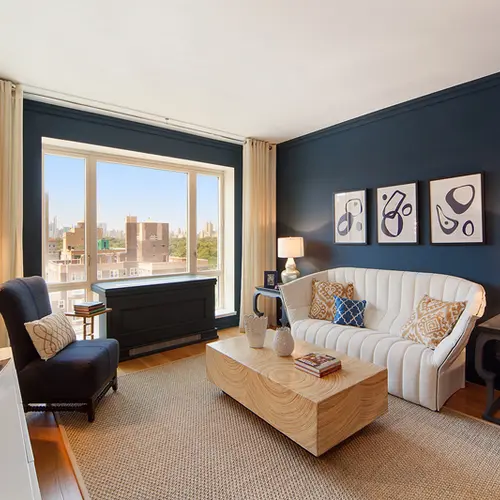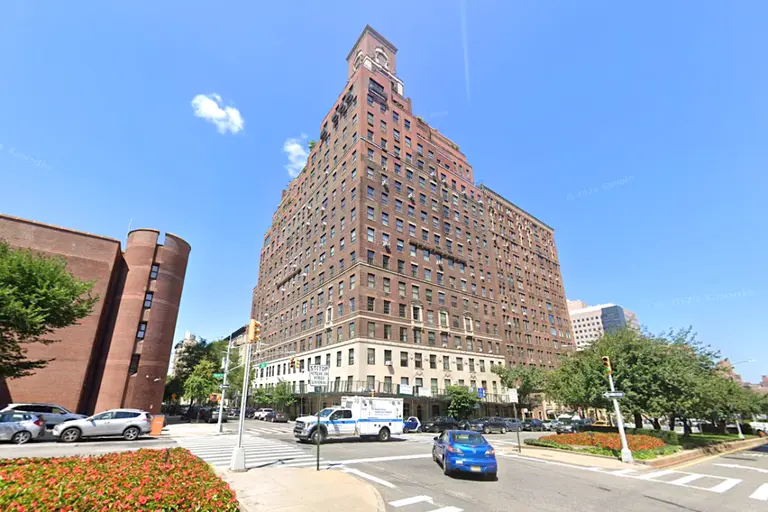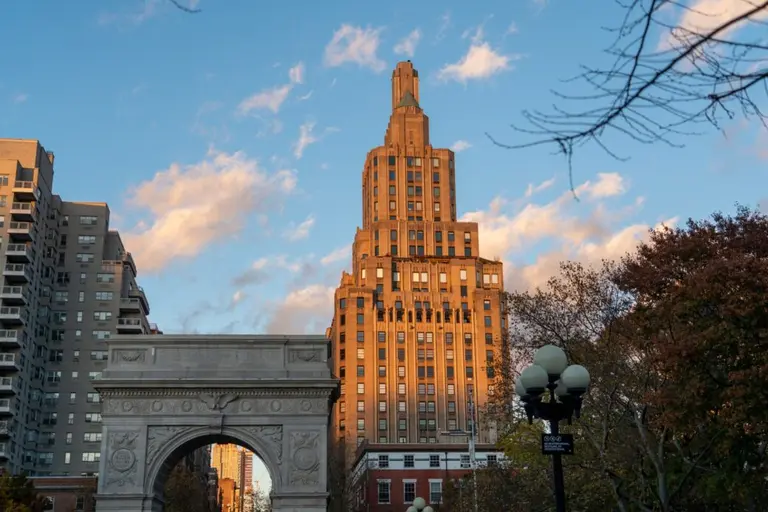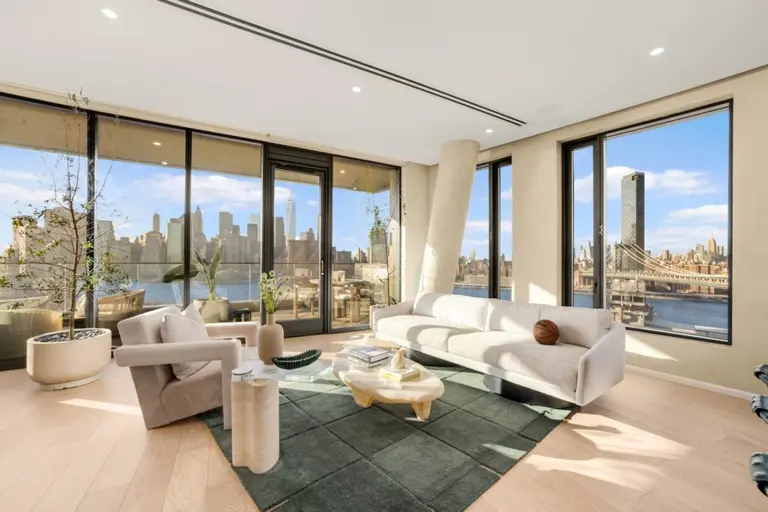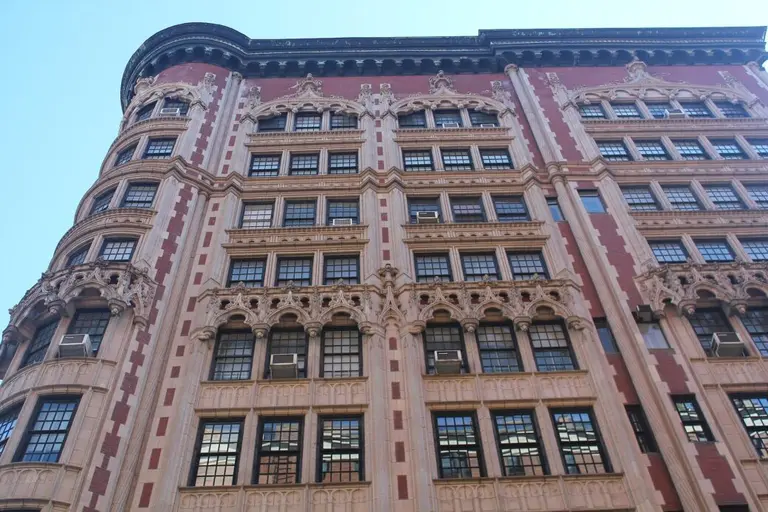From Broadway to Brokerage: Tom Postilio & Mickey Conlon of CORE on the Similarities of Show Biz and Real Estate

No need to rub your eyes, if Tom Postilio and Mickey Conlon look familiar, it’s probably because you’ve spent a season watching them run around Manhattan showing multi-million dollar properties to some of the world’s richest. The pair, who also share a Broadway past, were one of the first to bring real estate reality television to the masses with HGTV’s hugely popular Selling New York. But there’s more to Tom and Mickey than their stage sheen.
To date, the “Dream Team” has brought in over a $1.5 billion dollars in sales at CORE, securing the firm’s spot as the #1 brokerage in town, and earning themselves CORE’s 2013 Top Producer Award while at it. Charismatic and capable, it comes as no surprise that Tom and Mickey are a prime pick amongst developers and celebs looking for record-breaking results (David Sanborn, Lady Gaga, Jim Carey and Joan Collins are just a few of the names that make up their roster). We recently chatted with the powerhouse pair who gave us the scoop on everything from their first sales, to bringing what they learned on Broadway to the real estate business, to one of their most memorable closings involving a 7-foot fiberglass replica of the Statue of Liberty!
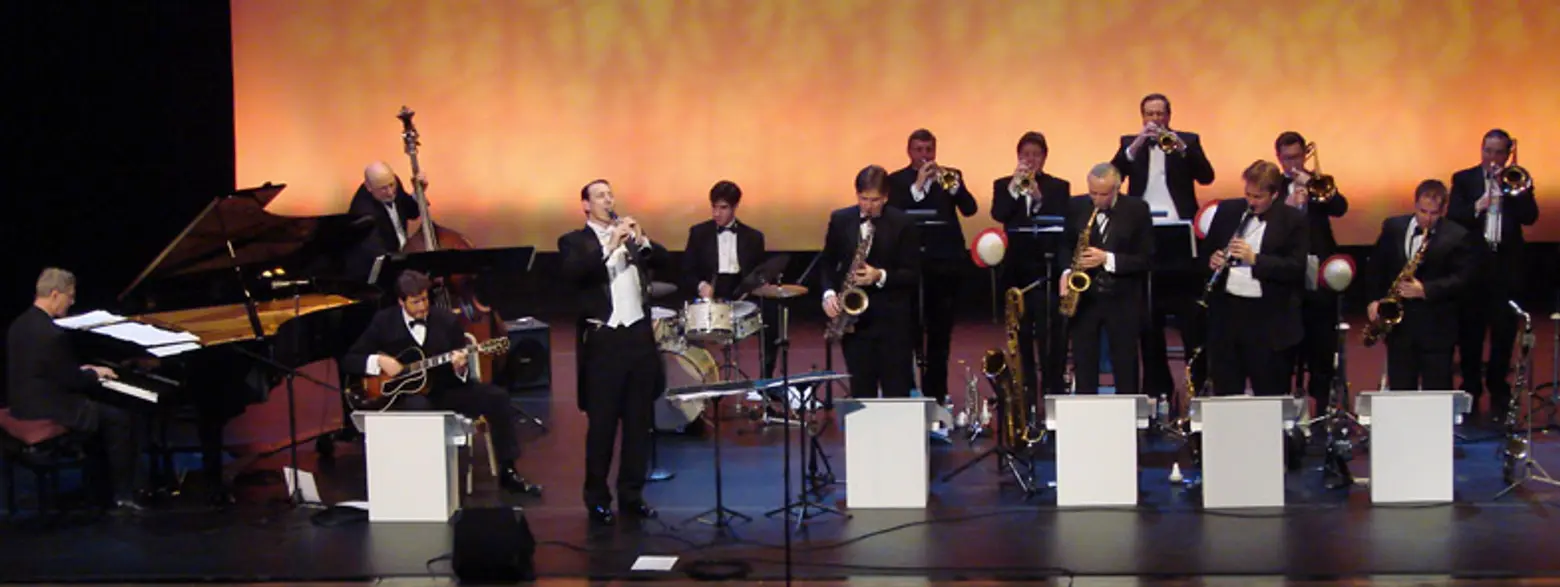
How did you meet and how did you end up working together?
Tom: We met at a concert at the Town Hall on West 43rd Street. We both come from show business backgrounds. I was a professional singer for many years and travelled all over the world, sang with the Glen Miller Orchestra, played at The Algonquin Hotel and in New York City in night clubs, made a couple of CDs and did an Off Broadway show. But I just got to the point where I wanted something in my life that didn’t require constantly packing a bag and flying somewhere, and friends helped me get into real estate.
I’m a founding member of CORE, but I started out at another company. It’s been an interesting journey. Because Mickey and I both have a show business background, we both approach real estate with a show business perspective. We kind of believe that everything in life has a little bit to do with show business, and this certainly rings true for sales. When we get a new listing, we make sure that it’s beautifully presented and will get people excited—it’s similar to putting on a Broadway production in a sense.
Mickey: Back in my previous life, that’s exactly what I did: I produced theatre. We’re both familiar with what it takes to manage a show and how to bring in an audience. For both of us it’s a really transferrable skill set. I first started in real estate business when I was 18, I got my license and I loved it. My early exposure to it had a tremendous impact on me, but I moved in a different direction and pursued a career in theatre. During the financial crisis when it was really hard to raise money for production, I found myself wondering which way to go with such a tough job market. I thought, “Well, the only other thing I know how to do well is real estate.” I was at BHS, which was a fantastic experience, and Tom was of course at CORE, and at some point the two of us put our heads together and decided that the whole is greater than the sum of its parts.
Surprisingly, the transition wasn’t difficult to make. I think there are a lot of similarities between the two industries. Even within the real estate industry you’ll find that many brokers come from the arts and theatre. I think that’s a testament to how transferable the skill set is. You’re dealing with people, you’re dealing with enormous sums of money, you’re dealing with risk, but you’re also dealing with fantasy and selling lifestyle and drawing people in to the mystique that is NY.
Do you remember your first sales?
Mickey: My first sale was in 1995 (laughs). I don’t even remember what it was!
Tom: I remember my first sale distinctly because I was so new to the business. It was a three-bedroom apartment down in the Financial District that sold for $1.65 million. As I was filling out the deal sheet on my computer I was triple-checking the punctuation and the digits—I was like “one, comma, six, five, zero, comma, zero, zero, zero” because I just couldn’t believe that people were spending that much money on an apartment. But of course, we now see one-bedroom apartments for $1.65 million.
 A condo at the Robert A. M. Stern-designed One Museum Mile at 1280 Fifth Avenue. Tom was the Director of Sales there for the developer, and his team sold 116 apartments at a sell out of over $200M.
A condo at the Robert A. M. Stern-designed One Museum Mile at 1280 Fifth Avenue. Tom was the Director of Sales there for the developer, and his team sold 116 apartments at a sell out of over $200M.
You were among CORE’s top brokers last year and you’re responsible for more than $1.5 billion in sales. How do you feel about your success today especially when you think back on where you started?
Tom: That’s a great question. I’ll never forget the first New York City apartment I moved into. It was a crappy, rent stabilized studio with bars on the windows on the Upper East Side. I paid $900 or maybe $880 a month for it. When I got that apartment I was in my mid-20s at the time and still pursuing a singing career and working on stage. But when my address was finally New York, New York, that gave me a certain satisfaction in life. Here I was officially living in Manhattan on my own. That was a very thrilling moment.
I often go back to that as a kind of touch point. With all my years singing and traveling the world, then working in real estate and having been so successful in real estate, I often pinch myself. If someone had told me back when I was pursuing a singing career that I would have been able to find such success in the real estate business, I probably wouldn’t have believed them had I not lived these past years. It’s been an amazing journey and I wouldn’t trade it. All the roads have really tied together.
Mickey: Looking back, it’s a very hard business to get started in because as an independent contractor, you’re not salaried. Now, more than ever, we have a lot of young people reaching out to us about breaking into the business and getting very excited about real estate, especially in New York. A lot of it has to do with the success of reality TV shows like Selling New York—which we were a part of—and Million Dollar Listing, but many don’t realize just how difficult it is to get up and running and to build momentum.
I look back on my early deals, and those tended to come more slowly than they do now. Now, at any given moment we can be working with 30 to 60 different clients and sellers and there are a lot of things always moving, new things coming into the pipeline. But early in the business it can be very scary when you’re out there for a few months and nothing has closed, and even when you finally have that deal, it’s another 60 to 90 days just before you have a check in your hands. That certainly scares a lot of people out of the business. But for those with the resolve to push forward and to replicate that success and grow it—for those who really want to build a better mouse trap—it’s a very exciting business. When I look back, I’m just very glad that I had the good sense to stick with it.
How long did it take to feel as if you had a good handle on things? I’m sure there were plenty of sleepless nights.
Mickey: We often say to people starting in the business that it takes about a year before you can really walk the walk, talk the talk, and really understand the language, because with New York City real estate, even after you’ve gone through the licensing course and take all the tests, you’ll find that 90% of what you need was not taught to you in a course. It’s baptism by fire and you just have to go out there and do it.
You’ll learn the players and the learn the different scenarios, like: How does a co-op work? What goes into preparing a board package? Why is this building’s co-op board more difficult than another neighborhood’s co-op board? There are a lot of things you need to know. Understanding that and compiling that information is what makes you valuable to buyers and sellers. It takes a lot of experience to be able to gather what’s needed to add value to a transaction. Even with our combined years of experience, every day there is something that raises our eyebrows and has us saying “You can’t make this stuff up.” You’re never fully prepared for every scenario.
 One of the pair’s favorite listings is 135 West 69th Street. The seller is jazz saxophonist, Dave Sanborn
One of the pair’s favorite listings is 135 West 69th Street. The seller is jazz saxophonist, Dave Sanborn
Speaking to that, do you have a favorite story related to a sale or buyer?
Tom: There have been several times where we’ve found ourselves in multi-million dollar transactions with a lot of conversation around inclusions in a sale. Once we had a situation where we were selling a $2.5 million apartment and in the end the deal almost fell apart over a fiberglass, 7-foot replica of the Statue of Liberty. The buyer really wanted it, but the seller did not want to part with it. There was this whole struggle because the seller’s husband had put together a list of all of these inclusions, which included almost all of the furniture in the apartment. The husband had put the statue on the inclusion list but didn’t confer with his wife on it. She went crazy because it had all this sentimental value—I think it was given to her for her birthday—and the couple had a whole fight over it. At the time we couldn’t believe it. We were saying to ourselves, “It’s a fiberglass replica of the Statue of Liberty, we’ll just go online and find one and buy it and bring it to the closing.”
Mickey: And we did! We found one and thought, okay, phew, good, everything is alright. It was $700, and we said we’d make a concession. But to our surprise the buyer said, “No. We want that one“. They were completely identical! No historic provenance. Ultimately the buyer understood what was going on and said that they wouldn’t take something that personal.
Tom: The seller, the wife, had sent the buyers this sweet handwritten note why it meant so much to her.
Mickey: It was fortunate because the way the inclusions were written up, it could have easily gone another way.
 The penthouse at 233 East 17th Street—another listing held by the duo. It is housed in a building that was a formerly a convent.
The penthouse at 233 East 17th Street—another listing held by the duo. It is housed in a building that was a formerly a convent.
Do you have a favorite type of property that you like to sell? A favorite neighborhood? I see that you guys hold a number of listings in landmarked buildings, and you recently closed on the Wilson Hunt House which has a fascinating back story.
Mickey: Going back to the show business element of what we do, we love anything that is unique. Whenever we find a property that tells a story, that gets our creative juices flowing. The Wilson Hunt House was fantastic. With landmarked properties, you can’t reproduce that. They’re very special and that particular house has a wonderful story of survival.
New York as a city has only in the last 50 years started to demonstrate any reverence for our historic structures. This is very much unlike most world cities, like those in Europe, where there are thousands of years of history that you can walk through and touch. In New York, we’re always building up, tearing down, and building up, so when we can tap into the history of these special places that have been preserved, it really gives us a sense of fulfillment. We really love that element of New York real estate. We’re really tuned into architecture and how entire streetscapes were formed as a whole, not just as pop-ups of starchitects who see an opportunity to have a shining moment.
On a related note, how do you feel about all of these supertall buildings sprouting up across Manhattan?
Mickey: In New York, the only way is up. We exhausted north, east, south and west many, many years ago. But I remember a lot of the upheaval over One57 when it was proposed. Seeing renderings of the building in relation to the existing skyline, it looked absolutely out of place. It seemed like it would dominate everything in the area. And now that it’s erected, it doesn’t stand out that much. It just seems part of New York: This is what we do, we build very tall buildings.
Certainly there is a point at which if the skyline becomes so saturated with these buildings, nobody will have any views anymore because we’ve found every way to go taller, higher, cantilever and acquire air rights where nobody thought air rights were available. The only place that might be safe is directly on Central Park.
Our final question: What’s the best thing about working with each other? The worst?
Tom: The best thing is that we often see eye to eye. We almost always agree on how to approach things and we constantly brainstorm on how to do the best that we can for our clients. If someone is in a difficult situation, the two of us will sit and really go back and forth on what are the pros and cons. The biggest negative is probably that we find it almost impossible to really ever turn it off. We’re constantly on the job.
Mickey: I would agree with that. We share all that we do. To have someone you can constantly rely on allows us to pass the baton. If Tom is putting out a fire in one place, I can deal with another issue over here. There’s no time loss and that matters a lot. In this business, time can be a liability. Having each other to lean on is a great comfort and a great asset.
***
All images courtesy of CORE
[This interview has been edited]





